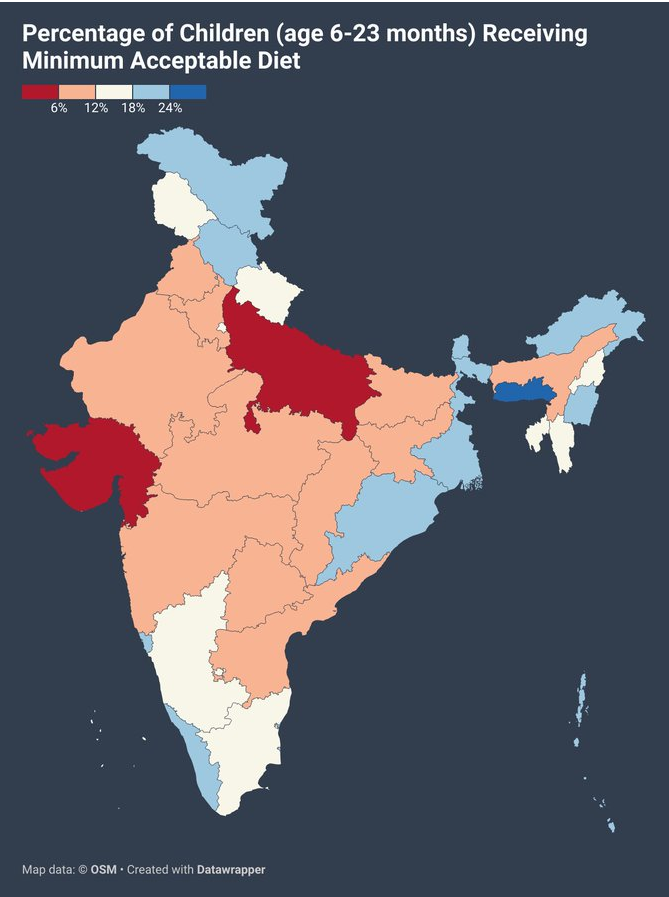89% children between 6-23 months don’t get adequate diet: NFHS
- The NFHS report looked at an adequate diet for both breastfeeding and non-breastfeeding children till they reached two years.
NFHS-5 findings
- Highlighted a key gap in child nutrition.
- 89% of children between the formative ages of 6-23 months do not receive a minimum acceptable diet.
- This is only marginally better than the 90.4 per cent recorded in NFHS-4.
Various Statistics
- 88.9% of children between 6-23 months, who are breastfeeding, did not receive adequate diet in 2019-2020 - a slight improvement from 91.3% in 2015-16.
- 87.3% of non-breastfeeding children in this category did not receive adequate nutrition in 2019-21, up from 85.7% in 2015-16.
- The proportion of children aged 6-23 months who received a minimum acceptable diet was highest in Meghalaya (28.5%) and the lowest in UP and Gujarat (5.9% each).
- In 2015-16, the proportion of children in this category stood at 5.2% in Gujarat and 6.1% in UP.
- Top-5 states(adequate diet was highest): Meghalaya was followed by Sikkim (23.8%), Kerala (23.3%), Ladakh (23.1%) and Puducherry (22.9%).
Diet needed in Infants
The minimum acceptable diet is a composite of two main things: breastfeeding and its frequency up to two years, and dietary diversity. A child needs at least four of the food groups indicated by the WHO every day to have a minimum acceptable diet. Only 25% of children receive this dietary diversity while 35% of children receive adequate milk frequency.

NFHS-5 Other Findings
The access to the minimum acceptable diet in this category of children is higher in urban areas (12.1 per cent) than rural areas (10.7 per cent).
- A deficient diet in the first 1000 days (from conception to 2 years) has huge effects on cognitive ability, including sensory and language capabilities.
- Key cognitive development takes place at this stage, affecting the child’s IQ later on and cognitive development, with 80% brain growth taking place by two years.
- If children don’t get an adequate diet, there is growth faltering and height is affected as well. It can also have an impact on increased anaemia.
- 67% of children aged 6-59 months have anaemia, which is higher than the NFHS-4 estimate of 59%.
- 36% of children under age five years are stunted (short for their age).
- 19% are wasted (thin for their height).
- 32% are underweight (thin for their age).
Conclusion
In order to make this right and address this issue from the grass root level, the Government needs to follow a targeted delivery system.
WHO has defined 10 essential food groups - cereals and millets, pulses, milk and milk products, roots and tubers, green leafy vegetables, other vegetables, fruits, fat or oil, fish, egg and other meats and sugar. (4-5 every day are required for a child to prevent malnutrition)
